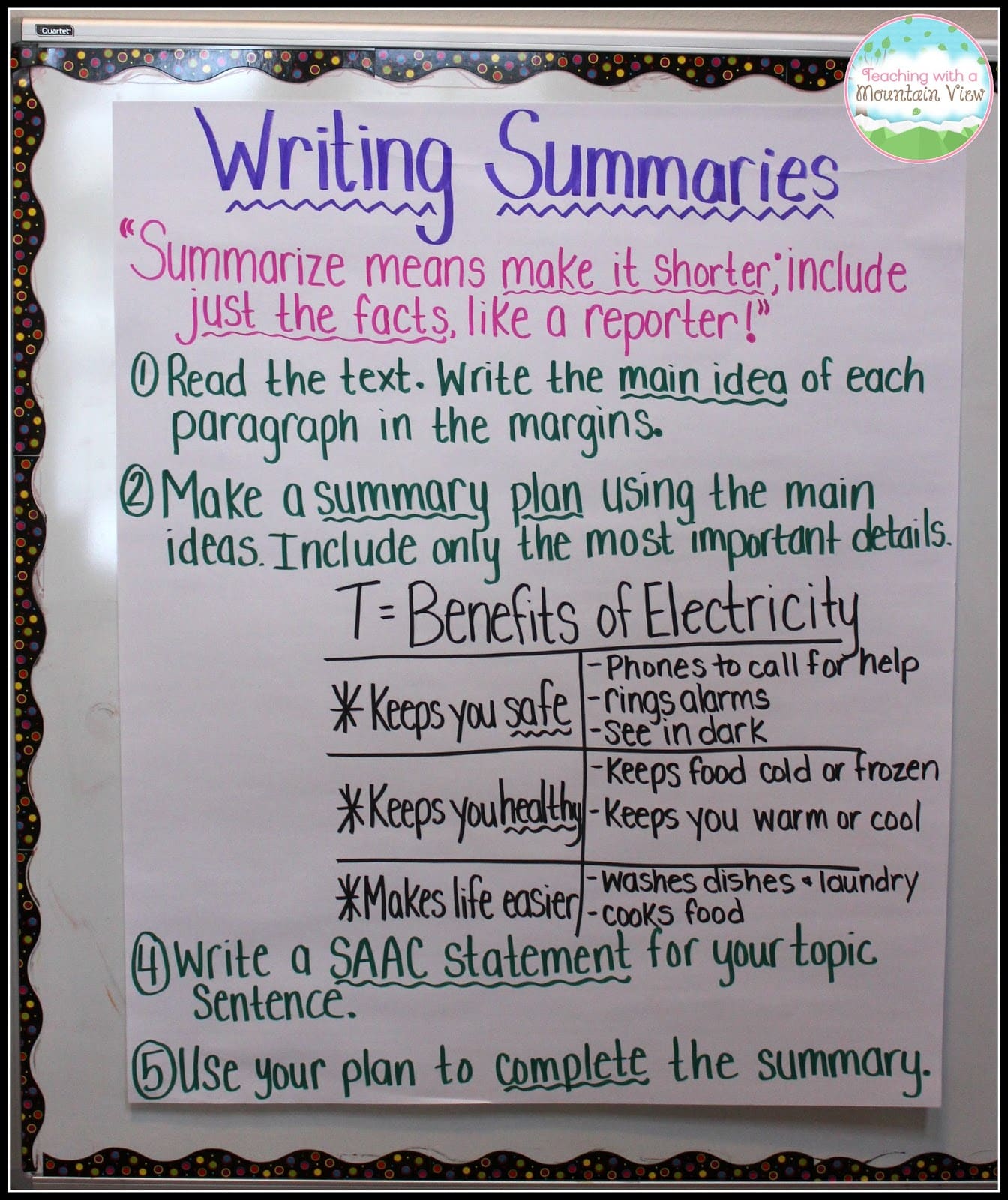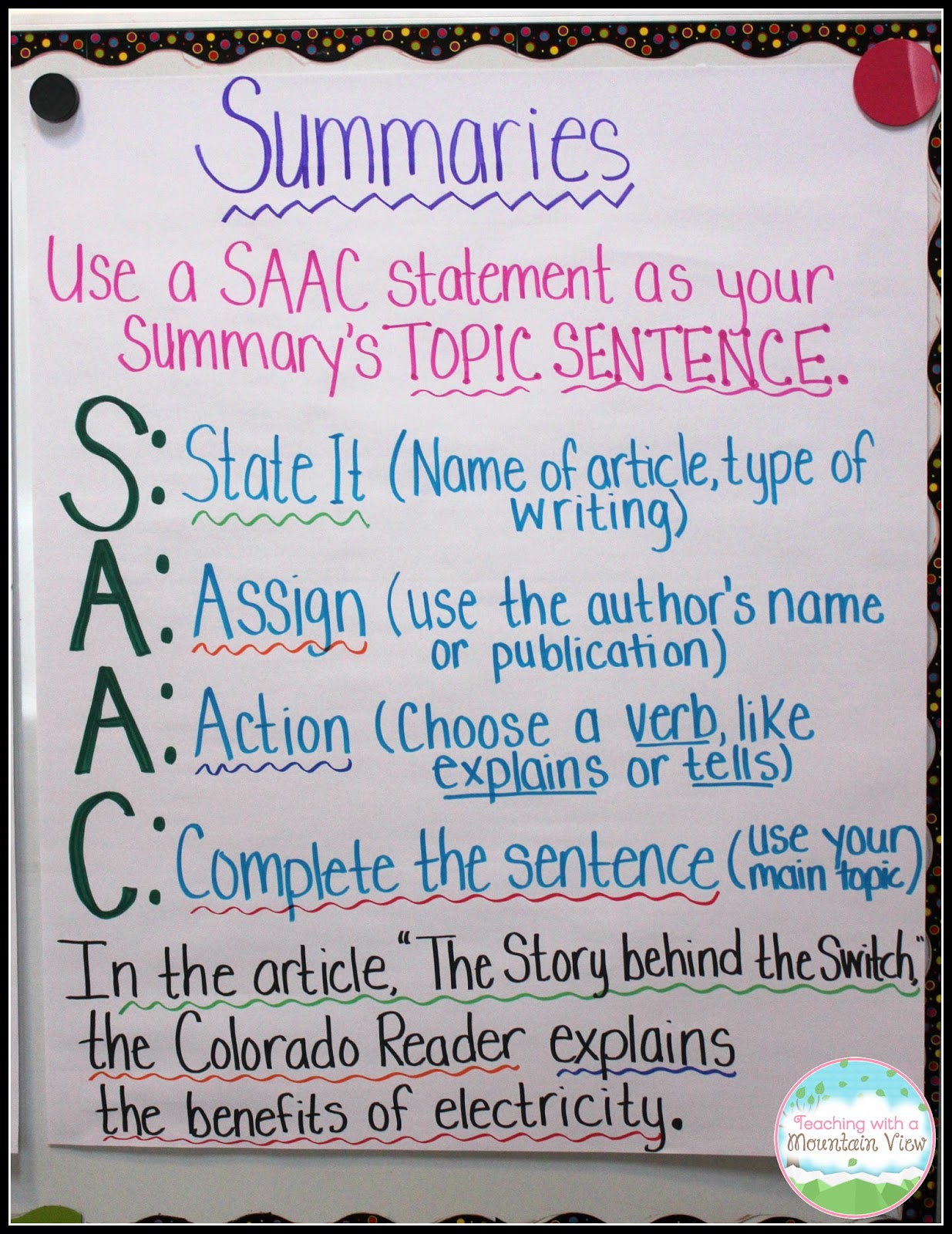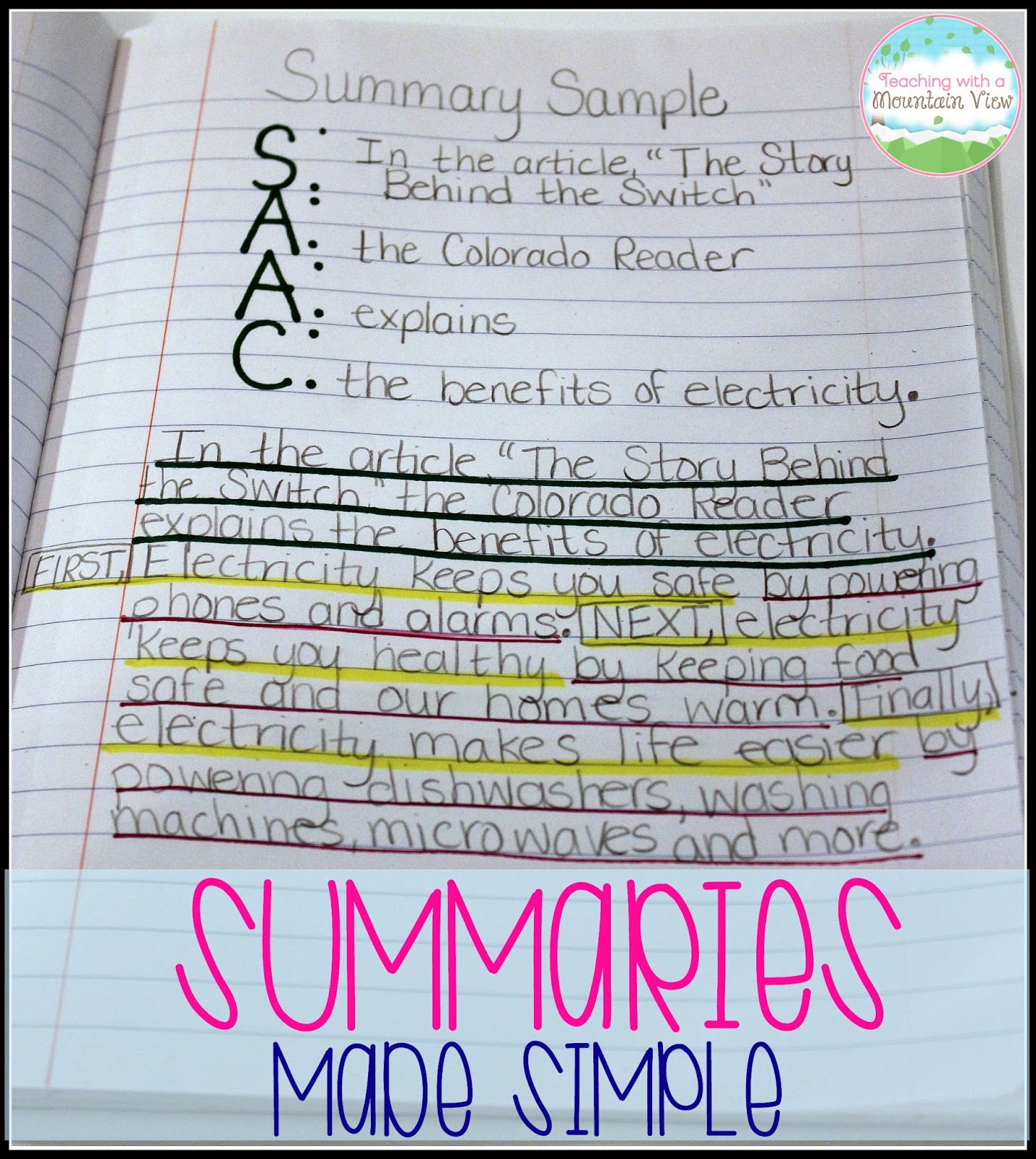Writing Summaries
By Mary Montero
Share This Post:

Hi there! I’m popping in today to share with you our method for writing summaries. Just like our topic sentence formats, these ideas came from the fabulous writing curriculum we use called Write Now Right Now. It is the easiest writing curriculum to follow and so effective! One of my colleagues (and former colleagues) wrote the curriculum, and I have so enjoyed using it this year.
Writing summaries is notoriously difficult for younger students. I have blogged about it several times before, with ideas for introducing the purpose of summarizing and ideas for teaching students the difference between paraphrasing, quoting, and summarizing. Now I’m sharing our anchor charts for writing basic nonfiction summaries. It is such a simple method once students grasp it, and they write beautiful summaries each and every time!

Here is the anchor chart we made together. The kids love the chant at the top!
“Summarize means make it shorter, just the facts like a reporter!”We always stand up and read it together. When we say “make it shorter” we bend our knees to make ourselves shorter, and when we get to “like a reporter,” we pretend we are reporters jotting notes on an invisible notepad. We also eliminate the “include” so that it jives a little bit better with a rhythm!
First, we teach the students to read the text through once before doing anything else. After they have read the text, they go through and pick out the main idea of each paragraph or group of paragraphs. Then, we write a VERY BRIEF summary plan. The plan you see on the anchor chart here is the same plan we use to do all of our writing, so they are pros at it by now. The main topic (usually found in the first paragraph or sentence of the text) is on the top. Each star you see shows one of the main ideas. Even if it is a long article with multiple paragraphs, we try to keep it to two or three star ideas. The dashes on the right hand side are details that support each star idea (main idea). I love, love, love this method for planning writing. We color code it all at the beginning of the year and it makes it so clear for the kids. While they are making their plan, we emphasize the importance of including only the most important details. No opinions, no little tiny irrelevant details– just the facts. Avoiding opinions seems to be one of the harder parts for my students. After they have made their summary plan comes my very favorite part! For the topic sentence of our summary, we write a SAAC statement. I have seen different variations of this, but this is the one I teach and love.
Action is easy because you teach them a few verbs and they stick with them. This is an action to describe what the author is doing in their writing. We use the verbs tells, explains, and describes most of the time.
Finally, they complete the SAAC statement with their topic (T) from their Summary Plan (see above).
I know it may look tedious at first glance, but my students consistently generate stellar summaries thanks to this method. Once they “get” all the parts of the SAAC statement, it is easy breezy to write awesome topic sentences and then they fill in the rest with their star ideas and details! Here is the sample summary I wrote in my teacher notebook (the students copied it into their writing notebooks for reference) after we did the anchor chart together. Sometimes, when we are writing a shorter summary, they skip the details (dashes) part of the plan and only do the star ideas (on the left side).
What method do YOU use to teach summarizing? I would love to hear more ideas!
Mary Montero
I’m so glad you are here. I’m a current gifted and talented teacher in a small town in Colorado, and I’ve been in education since 2009. My passion (other than my family and cookies) is for making teachers’ lives easier and classrooms more engaging.













I love this. It seems so easy and straight-forward. I just started a new grade last year and need help with ideas like this.Thank you for sharing!
Super cool ideas! Thanks for sharing, can't wait to use this in my class.
Absolutely excellent! Now what do you have for conclusions?
Do you have a link to the article you read?